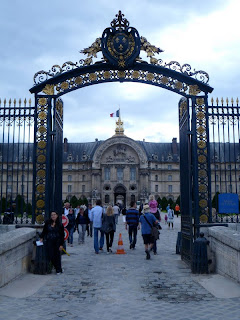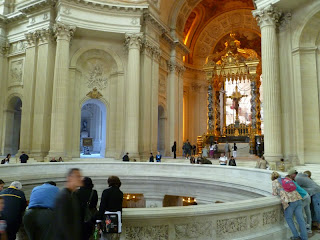I was in Stockholm a few weeks ago for some research, with plenty of time to sight-see.
I didn't know much about Stockholm before I went, but I was quite pleasantly surprised by how lovely a city it is. Having been a royal capital for centuries, it's more elegant, generally, than Gothenburg, but it shares with Sweden's N. 2 city a closeness with water and nature. Stockholm is spread out on an archipelago, so I always seemed to be crossing harbours and inlets, with boats everywhere. Parks---often on rocky hills jutting out of the landscape at random---seemed to be everywhere, too; apparently, the city's area is 1/3 water and 1/3 parkland, a beautiful, clean and relaxing setting for an otherwise grand pastel-coloured city.
The sky was quite dramatic too. I was there during the darkest time of year, of course, the sky black by 4:00 p.m. and the daytime sun very low in the sky even at its peak. The very clouds seemed to skim the horizon as they raced by, also; I don't know if this was just how they appeared under (or beside) the horizontal winter sun, or if it's typical of the Baltic winter, but it added to the peculiar impression of a very low firmament.
Much to my surprise, I realized when in Stockholm how much I missed cold winter weather around this time of year. The mild grey of Paris just doesn't cut it for me I suppose, while Stockholm's colder bite, though not quite like Canada's, felt more like December to me. That being said, there was no snow on the ground, although I was told that this year was milder than usual.
It's also a very calm city. Maybe the parkland and water reduces the city's overall density, or maybe it's the difference between Scandinavian culture and those I'm more familiar with, or maybe it was because it was winter, but while the streets were far from abandoned I often found them strangely quiet. I would sometimes turn several lonely corners before stumbling upon a busy, brightly-lit shopping street or a crowded restaurant. It was slightly surreal, and certainly a change from Paris.





















































